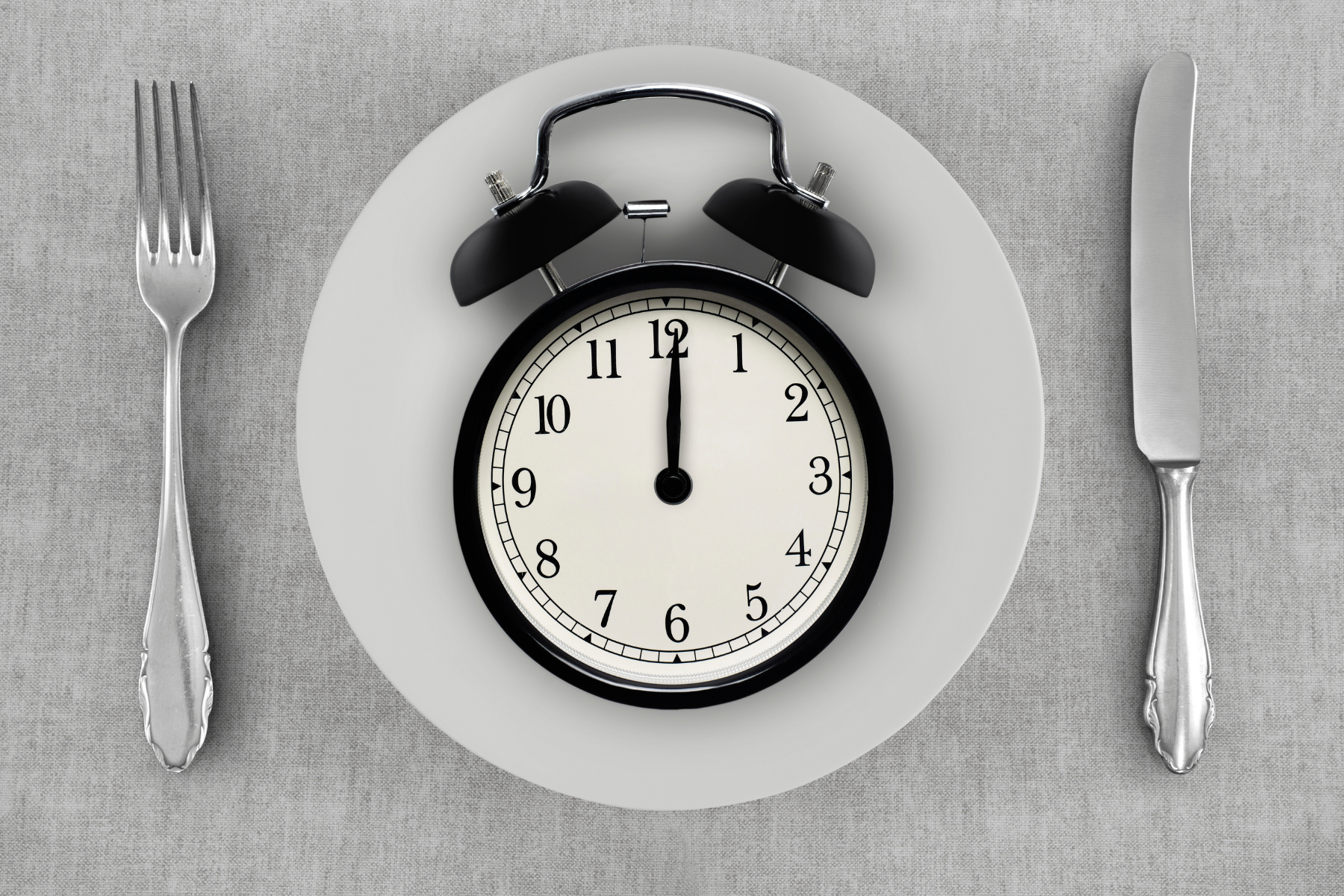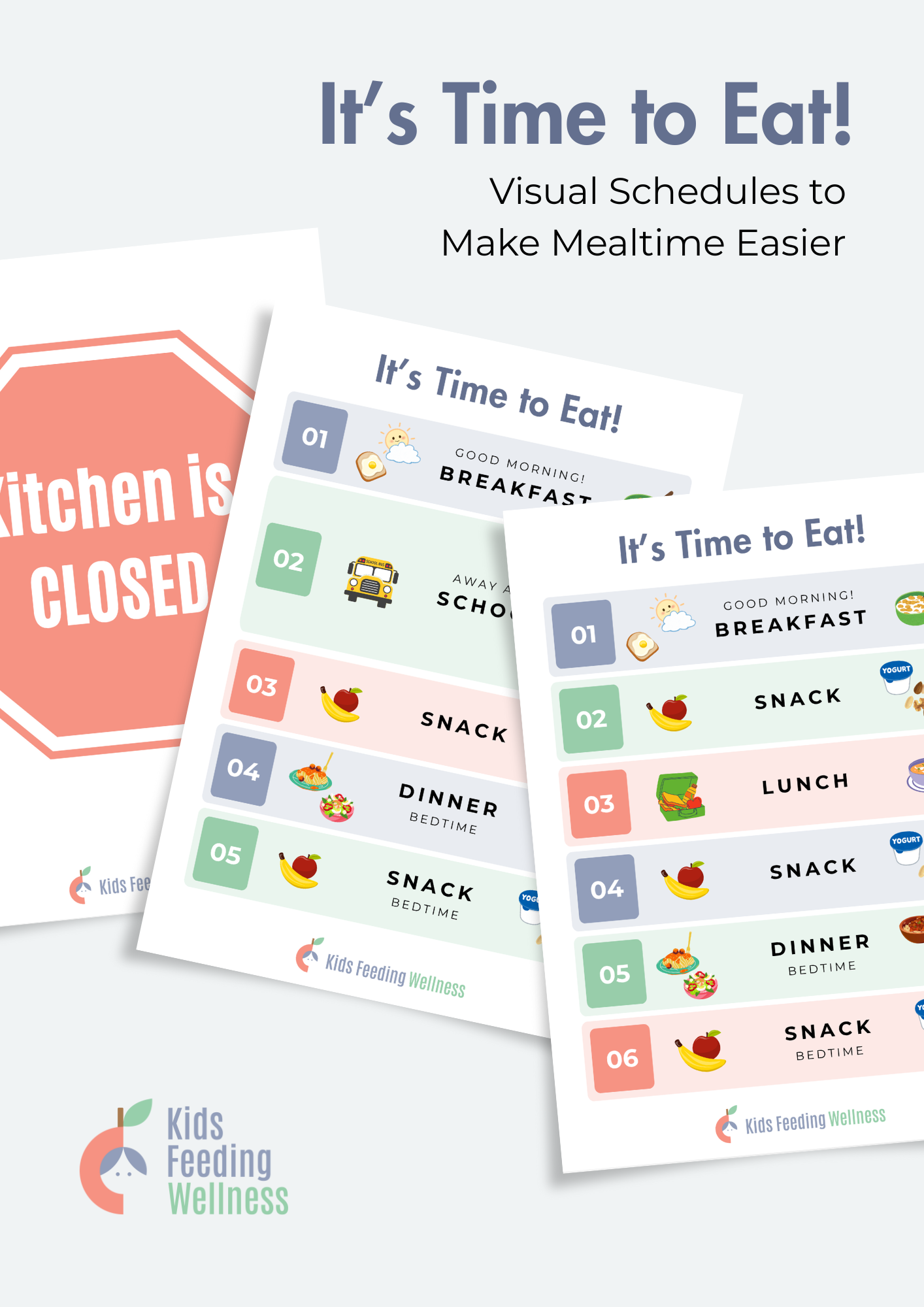How Mealtime Schedules and Routines Help Picky Eaters Enjoy Peaceful Meals
If you’re tired of daily mealtime battles with your picky eater, you’re not alone. Many parents feel frustrated trying to get their child to sit at the table or try new foods. The good news? Creating a consistent mealtime schedule and routine can make meals calmer, healthier, and more successful.
Our guide It’s Time to Eat!, was created to help families build predictable mealtime rhythms without the stress. In this article, you’ll discover why schedules and routines are so effective, what an effective mealtime structure looks like, and how to create habits that reduce power struggles and help your child feel secure. You’ll also find practical tips for handling common challenges—like constant snack requests—and learn how to trust your child to listen to their own hunger and fullness cues.
By the end, you’ll have simple, realistic strategies you can start using right away to create more peaceful mealtimes and support your child’s healthy eating habits.
What Is a Mealtime Schedule and Why Does It Matter?
A mealtime schedule is a predictable plan for when meals and snacks happen each day—like breakfast around 7:30, lunch at noon, and a snack at 3:00. A mealtime routine is the set of steps that happen during meals: washing hands, setting the table, eating, and cleaning up.
Schedules and routines are important because toddlers and preschoolers aren’t developmentally ready to manage eating on their own. Their brains are still learning impulse control and self-regulation. Without clear structure, grazing and picky eating often take over.
Even for school-age children, predictable mealtimes help. Older kids may have more awareness, but many still graze between activities—especially when food is always available. Grazing can dull hunger cues and lead to filling up on snacks instead of balanced meals. For selective eaters, grazing can also become a way to avoid trying new foods.
By offering meals and snacks on a schedule, you give your child consistent opportunities to eat while helping them learn when to expect food and how to arrive at the table ready to eat.
Table 1: Meal and Snack Guide by Age
How Often Should My Child Eat?
Children’s tummies are small and their energy needs are high, so they need food more often than adults. While every child is different, Table 1 offers a helpful reference for spacing meals and snacks by age.
But Remember—Appetites Naturally Vary
Even with consistent mealtimes, children’s hunger will change day to day. That’s why it’s so important to let children decide how much they eat and to trust them to listen to their own bodies.
Your child’s appetite is influenced by many factors, including:
Growth Patterns: Growth spurts can temporarily increase hunger, while growth plateaus can lead to eating less.
Genetic Influences: Some kids naturally have bigger or smaller appetites.
Activity Level: Busy days require more calories; quieter days may need less.
Gender: Boys often have higher calorie needs than girls, though every child is different.
Metabolism: Faster metabolism burns energy more quickly.
Health: Illness or recovery can temporarily decrease appetite.
Food Composition: Meals higher in protein and fat keep kids fuller longer, while carb-heavy meals may lead to earlier hunger.
This is why your job is to decide when and what food is offered—and your child’s job is to decide whether and how much to eat.
Benefits of a Consistent Schedule and Routine
Establishing clear rhythms around meals offers many benefits:
More willingness to try new foods: Predictable schedules help kids come to the table hungry.
Fewer power struggles: Consistent expectations reduce constant snack requests.
Better self-regulation: Kids learn to recognize hunger and fullness cues.
Emotional security: Predictability helps kids feel safe.
Life skills: Routines teach patience, manners, and independence.
Build a Predictable Mealtime Routine
A predictable routine helps children transition calmly to meals. Here’s an example:
Five-Minute Warning: Give a heads-up that it’s almost time to eat.
Wash Hands: Signal that it’s time to focus on eating.
Set the Table Together: Encourage participation.
Eat Together, Pressure-Free: Keep conversation light; avoid forcing bites.
All Done Ritual: Have your child say when they’re finished.
Clean Up Together: Build responsibility and closure to the meal.
Troubleshooting Mealtime Schedules
Even with good structure, challenges can arise. Here’s how to stay on track:
#1 Introduce the New Rules Clearly
When starting a schedule, explain it simply:
“Snacks won’t be available all the time anymore. You’ll know when food is coming because we’ll have meals and snack times planned each day.”
“We need breaks between meals to play, rest, and let our tummies digest.”
Tip: You can also create a closed kitchen policy (visual included in our guide) to help set clear boundaries. This means the kitchen is closed between meals and snacks and will open again at the next eating time. If it helps, post a simple visual reminder on the fridge. Our It’s Time to Eat! guide includes a printable closed kitchen sign you can use so your child knows exactly when food will be available.
#2 Address Food Requests Between Meals
If your child asks for a snack, try the A.C.T. approach:
Acknowledge Feelings: “I hear that you’re feeling hungry.”
Communicate the Rules: “The kitchen is closed for now, but snack time will be at 3:00.”
Turn Attention: “Let’s find something fun to do while we wait.”
#3 Stay Consistent
Kids may protest at first. Keeping the schedule steady helps them adjust and trust the routine. New habits can take anywhere from 2-6 weeks to develop so remember consistency is key!
#4 Use a Visual Schedule
Visual tools help kids see when meals are coming. Our It’s Time to Eat! guide includes 4 printable mealtime schedules you can print and laminate so you and your child can track meals together.
Real-Life Example Responses
When your child asks for a snack soon after a meal, try matching your response to their understanding of time:
For younger children who don’t yet understand time concepts:
“I know you’re hungry. We’ll have a snack after we come back from the park”
“Snack time is after we finish your bath.”
“We just had breakfast. Our next meal will be after story time.”
For older children who understand time:
“I hear you’re feeling hungry. The kitchen is closed right now, but we’ll have snack time at 3:00.”
“Snack time is in about an hour.”
“Lunch will be at 12:30, so you can eat then.”
What to Expect
At first, your child might resist the changes. That’s normal. Over time, they’ll feel more secure knowing when food will be offered and become more comfortable listening to their own hunger and fullness cues.
Remember—consistency plus flexibility is the sweet spot. You provide the structure; your child decides how much to eat. This balance helps end mealtime battles and builds a healthier relationship with food.
Ready to Make Mealtimes More Peaceful?
You don’t have to tackle picky eating alone.
Download your It’s Time to Eat! guide below to start creating a schedule and routine that works for your family.
Need more support? Schedule a consultation or ask a question on our Contact Page.
With the right tools, you can turn daily meals into calm, connected moments your family looks forward to.



